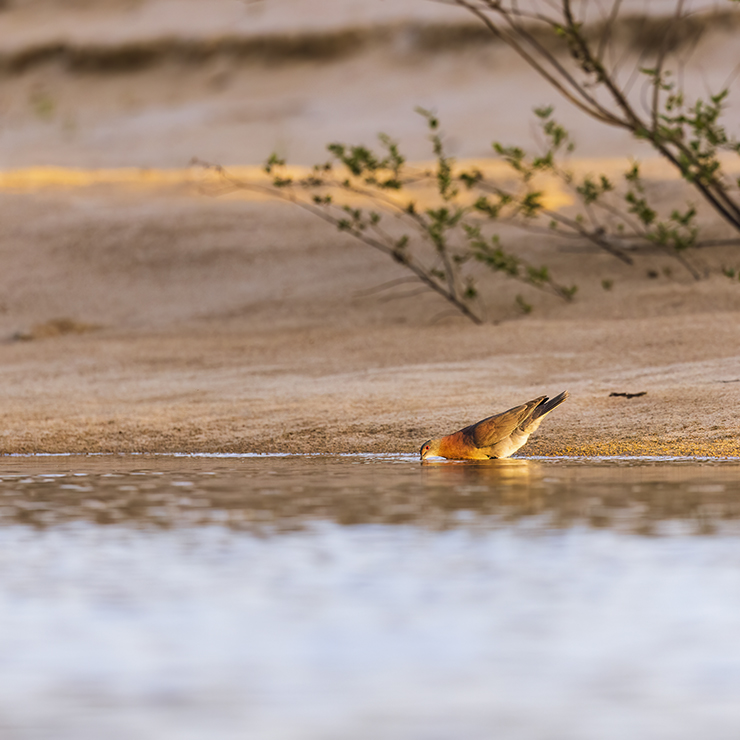
Originating from the word “Rapon” which translates to Black-bellied Whistling Duck in the Makushi language, the Rupununi River flows north and then east, where it then joins the mighty Essequibo River that flows northward through the rest of Guyana, ultimately meeting its end at the country’s (only) Atlantic coast. During the rainy season the Rupununi River shares a watershed with the Amazon and is connected to several other water courses via flooded plains. Thus, the Rupununi River boasts astounding biodiversity and experiencing this ecosystem was a sort of grand finale for our time in Guyana.
After a well-deserved rest following a very profitable morning’s birding in the nearby Moco-moco village, we took the short walk from our lodge down to the dock. We had only just emerged from the cover of the trail when movement in the sky made everyone instinctively look up. A pair of Jabiru were locked in a chase, one tucked in its eight foot wingspan and made a dive not too dissimilar from that of a falcon. The second bird followed suit, physics itself noisily straining to keep the bird airborne as it wheeled overhead. Cameras were still tucked away, but the experience left us all without words. It unfolded so quickly, it would have been completely frustrating to attempt to track the gargantuan storks as they raced across our field of view.
Needless to say we were excited about this mission. Pumped, as the people say. We set off in our boat downriver, calmly drifting amid sightings of Cocoi Heron, Black Skimmer, and Pied Plover.
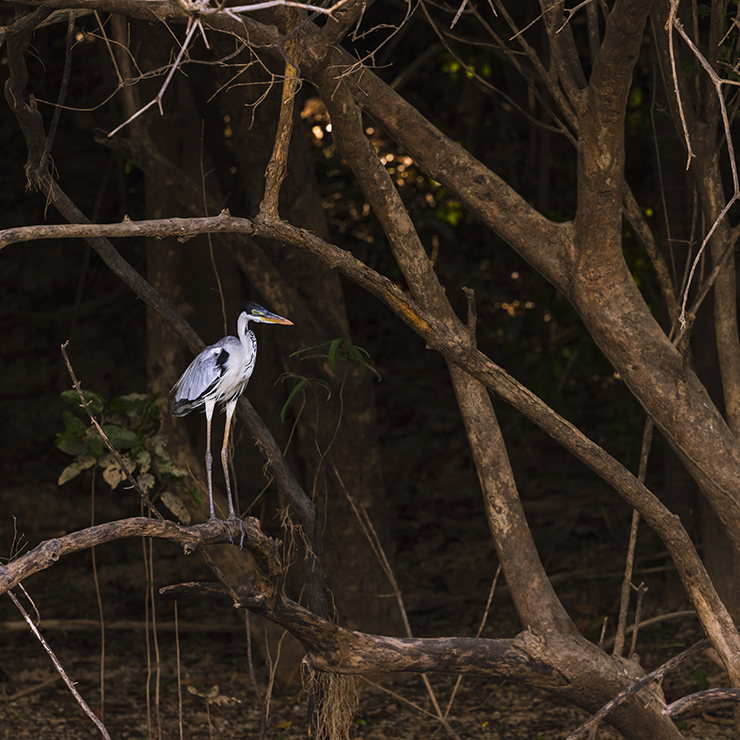
Cocoi Heron
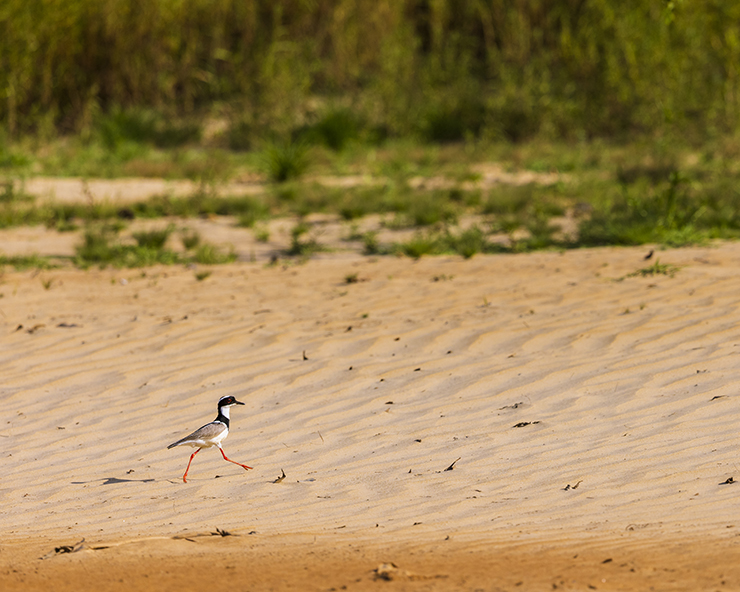
Pied Plover
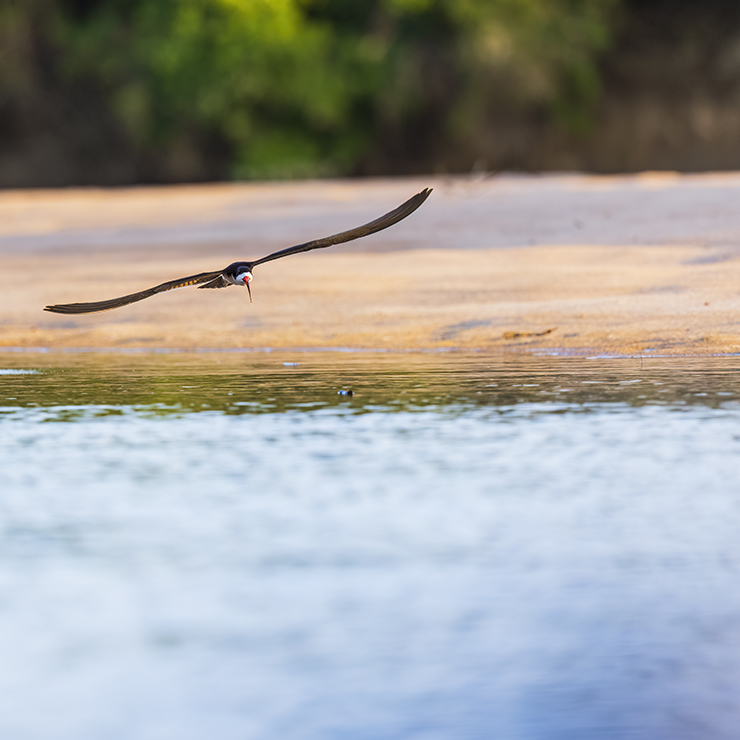
Black Skimmer
Coming across a pair of Red-capped Cardinals was exciting – resembling the Masked Cardinal that we were accustomed to in Trinidad but a little stretched out, as if pulled gently by the tail and bill simultaneously. We observed the adult bird drink hesitantly from the river, and I wondered why it didn’t opt for a safer, more secluded option. Surely there must have been copious carnivores lurking in the murky water who wouldn’t mind a feathery snack. Alas, there must have been some lesson taking place that was beyond my understanding.
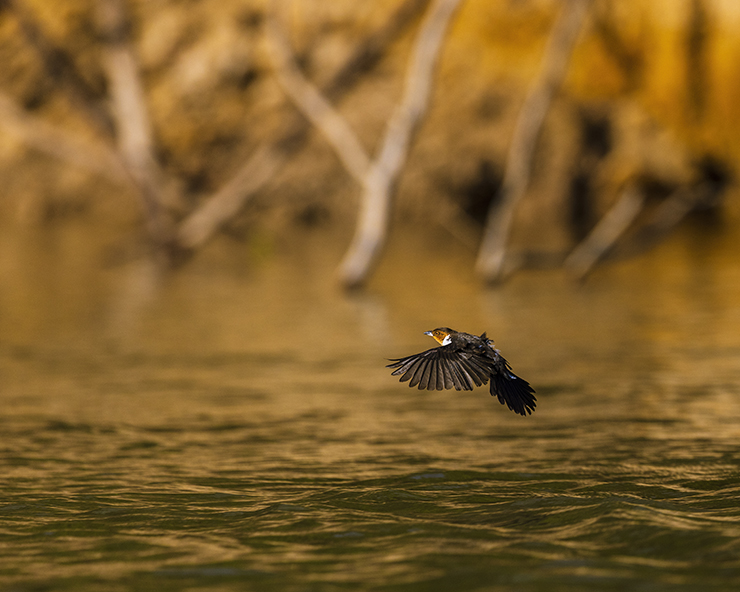
Red-capped Cardinal juvenile (above) and adult (below)
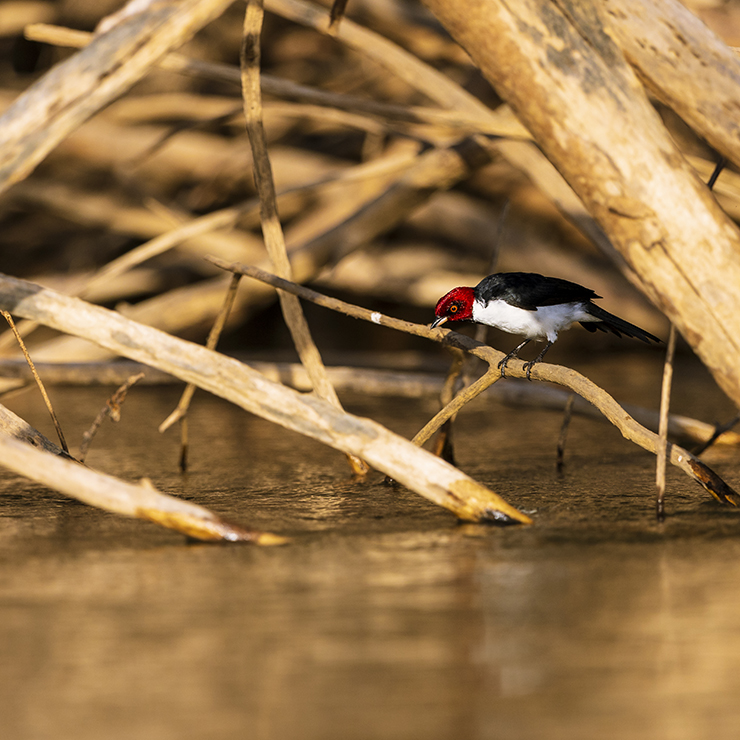
The Rupununi River is a magical and serene experience, inducing a deep sense of calm as if becoming as unhurried as the river itself, winding its way through the lush jungle. Some of the birds we saw were familiar, others manifesting like dreams being pieced together.
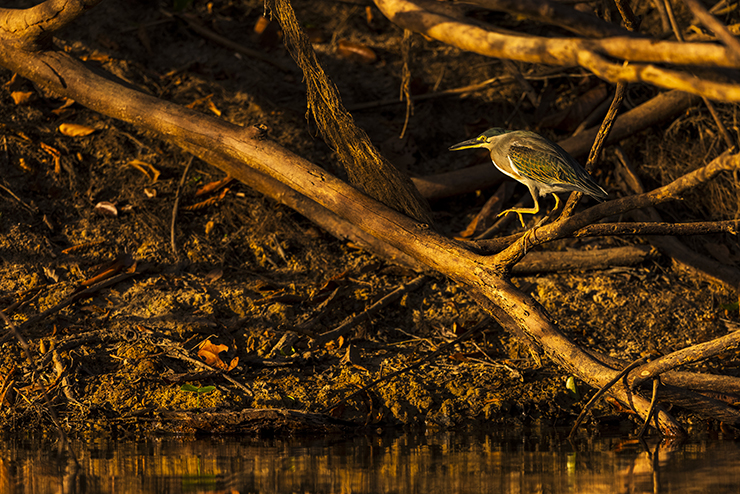
Striated Heron, a routine sighting in many places I’ve been.
Being on the review committee for T&T, I had to evaluate a recent sighting of a Capped Heron on Trinidad some months prior and I had marvelled at its stately appearance in the photograph provided. Finally, I was able to lay my own eyes on one.
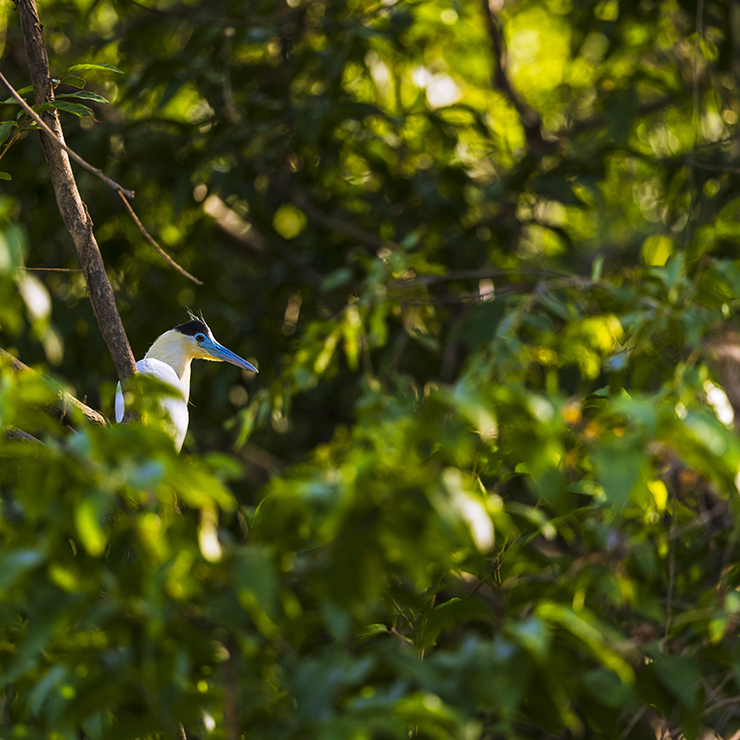
Capped Heron
Meandering along the river, I noticed that the corners and bends seemed to always attract some sort of activity. A Jabiru disappeared up a small stream around one corner, another corner was attended to by a small family of Amazon Kingfishers. Some of the banks looked as if they needed a lounging jaguar to achieve the ultimate level of completeness. Around another bend, we came upon a small group of Pale-vented Pigeons on the sand, standing suspiciously close to the water’s edge. Slowing down, we drifted past and observed them. Once they became comfortable with our presence, they walked into the shallowest bits and began drinking.
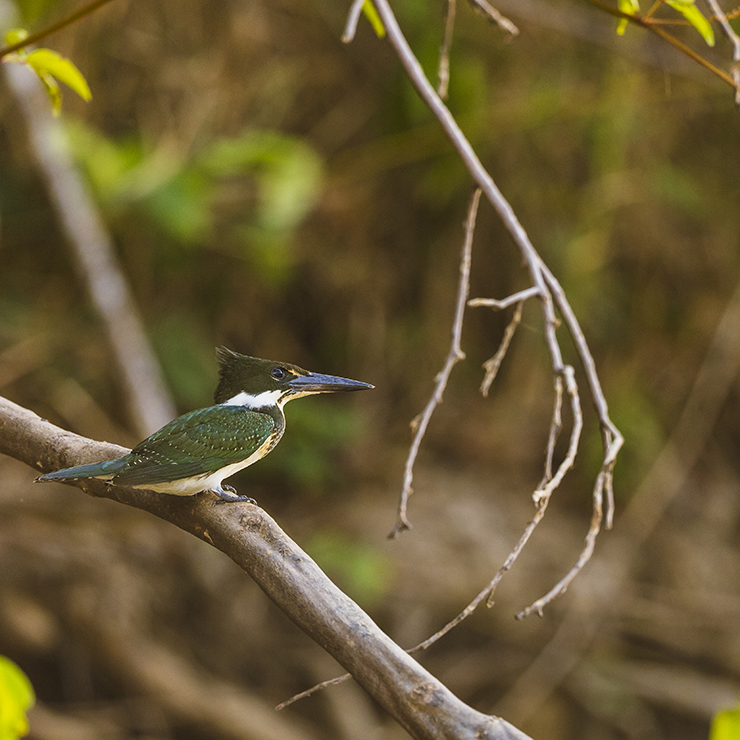
Amazon Kingfisher

Pale-vented Pigeon
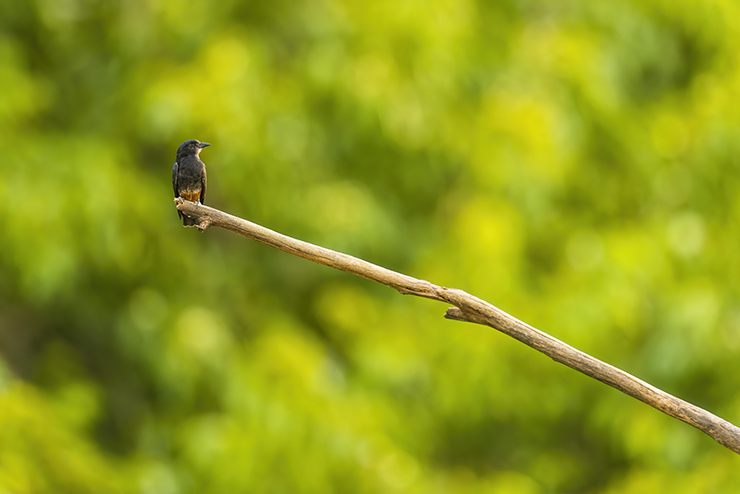
Even though we had encountered many Swallow-winged Puffbirds on the trip thus far, I couldn’t pass up an opportunity to photograph another.
Now several kilometres from where we began, we came to a quiet bank near to the union of the main river with a tributary. Here, we were treated to the sight of a family of Giant River Otters that were stationed on the opposite bank.
Cold, fresh fruit juices were passed around and we enjoyed the otter family until the sun well and truly disappeared. After a momentary stillness day became night, and life erupted again. The sounds of the night intensified, and we were lucky to catch a Band-tailed Nighthawk hunting overhead as we were unmooring ourselves.
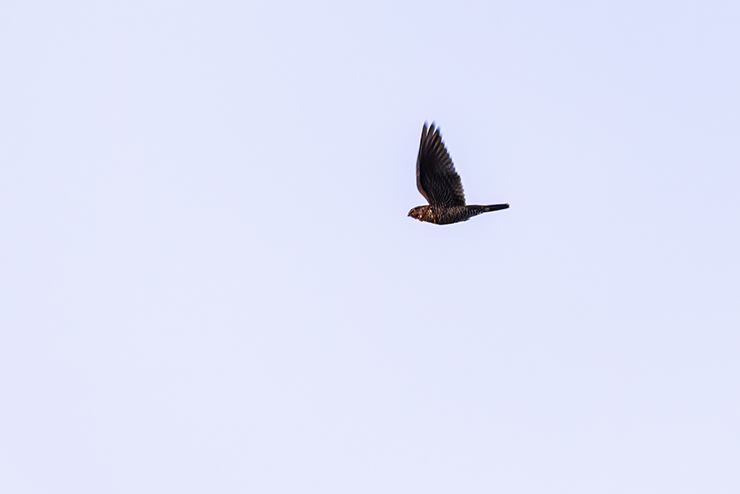
Band-tailed Nighthawk
On the way back to our lodge, we enjoyed views of both Greater and Lesser Bulldog Bats as they darted over the water in search of signs of fish. Yes, these bats use echolocation to detect the ripples made by fish that are either on or just below the surface of the water. I can’t even comprehend the resolution necessary for a sonic image to be that accurate.





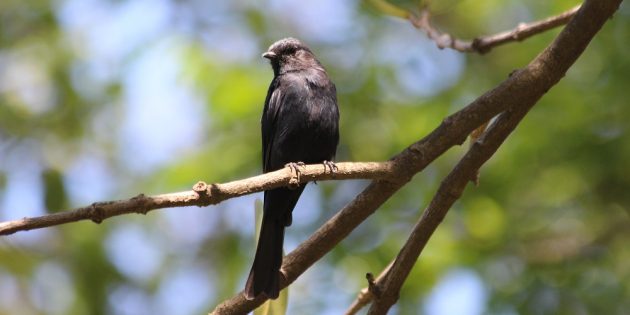

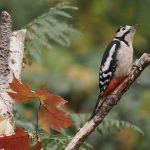
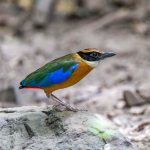
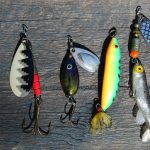

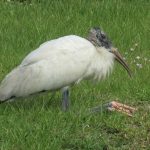
Please, let there be more on Guyana!
Fascinating location, thanks!
Thanks Brian and Peter – sorry I’m now catching up on comments! Will post something else on Guyana for sure, cheers